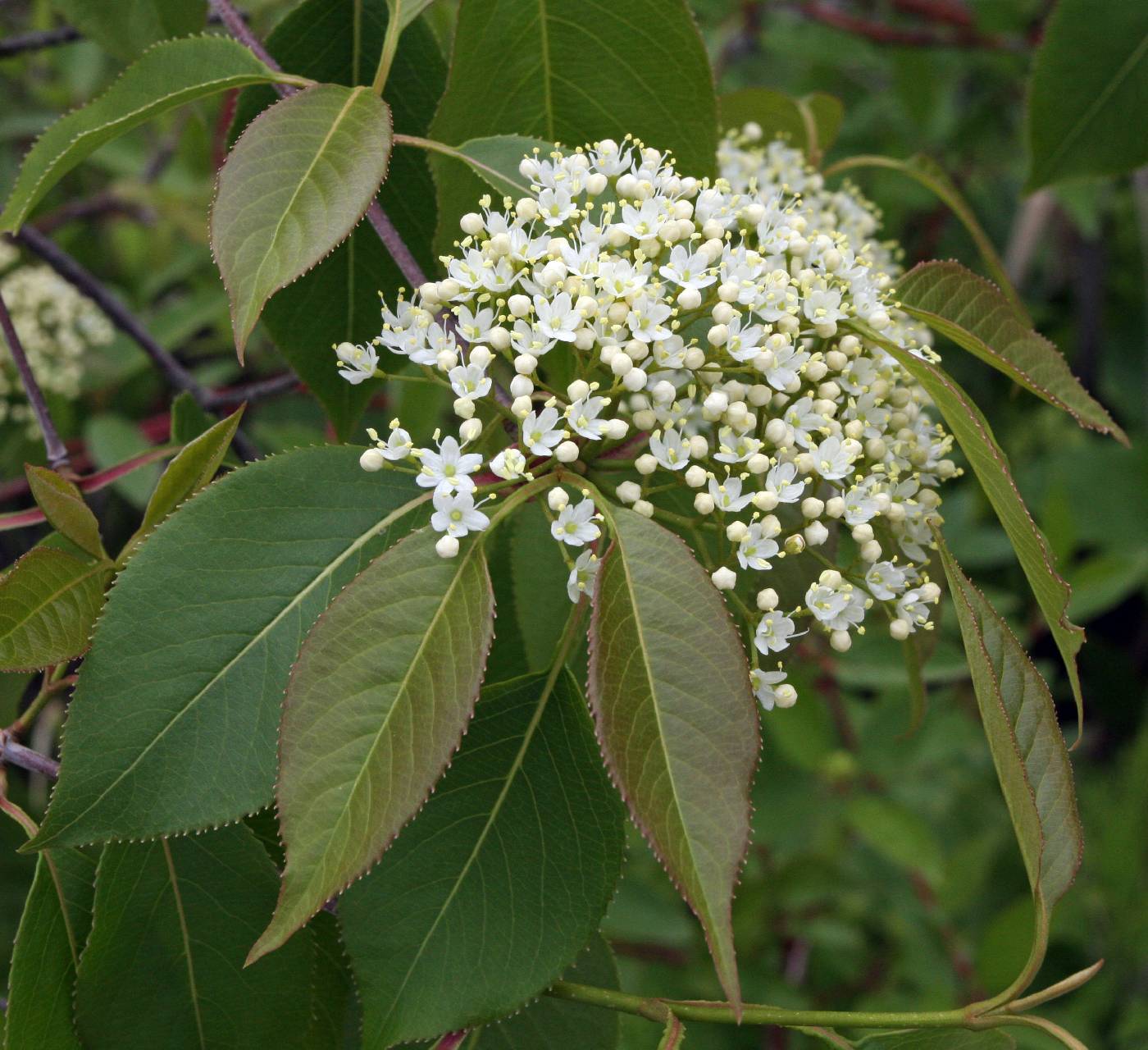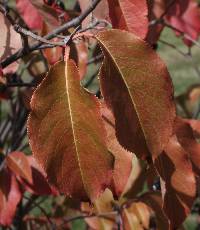Tall shrub or small tree to 10 m tall
Leaves: opposite, stalked, 5 - 8 cm long, half as wide, egg-shaped to oblong with broadly tapering to rounded base and long-pointed tip, sharply toothed (six to ten teeth per centimeter). Leaf stalks 1 - 2 cm long, often wavy-winged along the margins.
Flowers: in branched, rounded clusters (cymes). Cymes stalkless or nearly so, three- to seven-rayed, 5 - 10 mm long. Corolla five-lobed, white, 4 - 8 mm wide, lobes pointed. Stamens five, exserted from the corolla. Anthers yellow. Stigma three-lobed.
Fruit: berry-like (drupe), in clusters, bluish black with a whitish bloom, 8 - 15 mm wide, elliptical to rounded, single-seeded.
Twigs: slender, grayish brown, sometimes slightly hairy.
Form: rounded with arching branches.
Similar species: Viburnum lantana is similar but covered with star-shaped hairs. Viburnum prunifolium is also similar but differs by having blunt to pointed leaf tips and leaf stalks without wavy margins. Viburnum nudum var. cassinoides differs by having cymes on 5 mm - 5 cm long stalks.
Flowering: late April to early June
Habitat and ecology: Frequent in moist woods. Also found along woodland edges, fencerows, and roads.
Occurence in the Chicago region: native
Notes: About 200 species of Viburnum occur between North America, Europe and Asia. Many are ornamental shrubs cultivated for their showy flowers, autumn foliage, and attraction to wildlife.
Etymology: Viburnum is the Latin word for the Wayfaring tree. Lentago means "tough yet pliable."
Author: The Morton Arboretum


